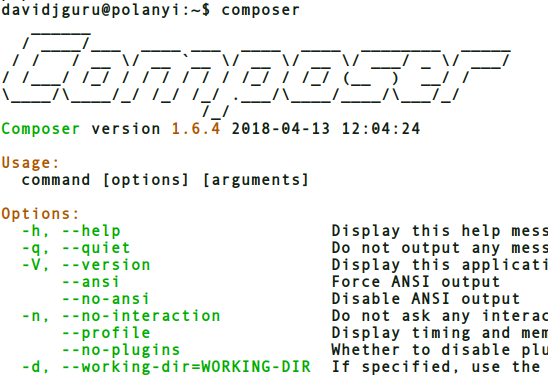

Pick a directoryyou can write to and whose path Is not too long (e.g., /path/to), then execute the following commands (assuming a U*nx system).
COMPOSER UPDATE DRUPAL INSTALL
Um, not the easiest thing to do but I can download and install the latest (V2), then downgrade back to V1. The solution was to install the latest V1 of composer, do the plug-in updates, then do the Drupal updates using composer V2. For other reasons see the excellent article at … This has been fixed (as far as I can tell) in composer 2. Drupal seems to always take up HUGE amounts of memory – usually so much so that your need to tell it to use unlimited memory. In composer’s case there is also the issue of memory management. That version should have fixed all known bugs. Well… there is the philosophy of always using the latest stable version of libraries and tools.
COMPOSER UPDATE DRUPAL UPGRADE
That seems to be a lot of work, why should you upgrade composer. These needed to be upgraded so the upgrade operation would work. That file was using a number of older plug-ins. But it was because the configuration file (composer.json) was for the Drupal installation. Drupal could not be updated and (for once) it wasn’t a Drupal problem. … However, in this case there were several plug-ins to Composer that were tied to the previous V1 installation and would not run in V2.Ĭomposer was generating a number of errors when I tried the simple update of a few modules. It’s always good to be running on the most recent stable version. The hosting company (probably the host control panel software) updated composer to version 2. I recently needed to update a rather complex D8 site. From my experience it is about the same level of difficulty as using drush was for Drupal V7 when there are no significant dependicies. This is an easier way to keep track of all dependicies and update paths. Starting with Drupal V8 (aka D8), it is recommended that composer be used for all updates.


 0 kommentar(er)
0 kommentar(er)
